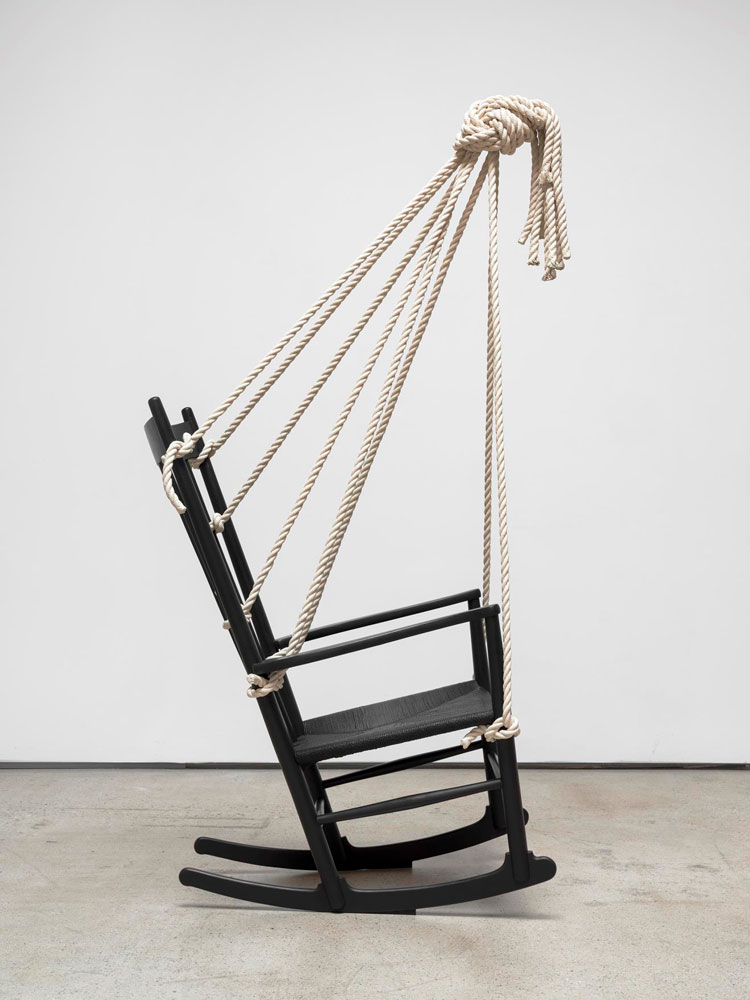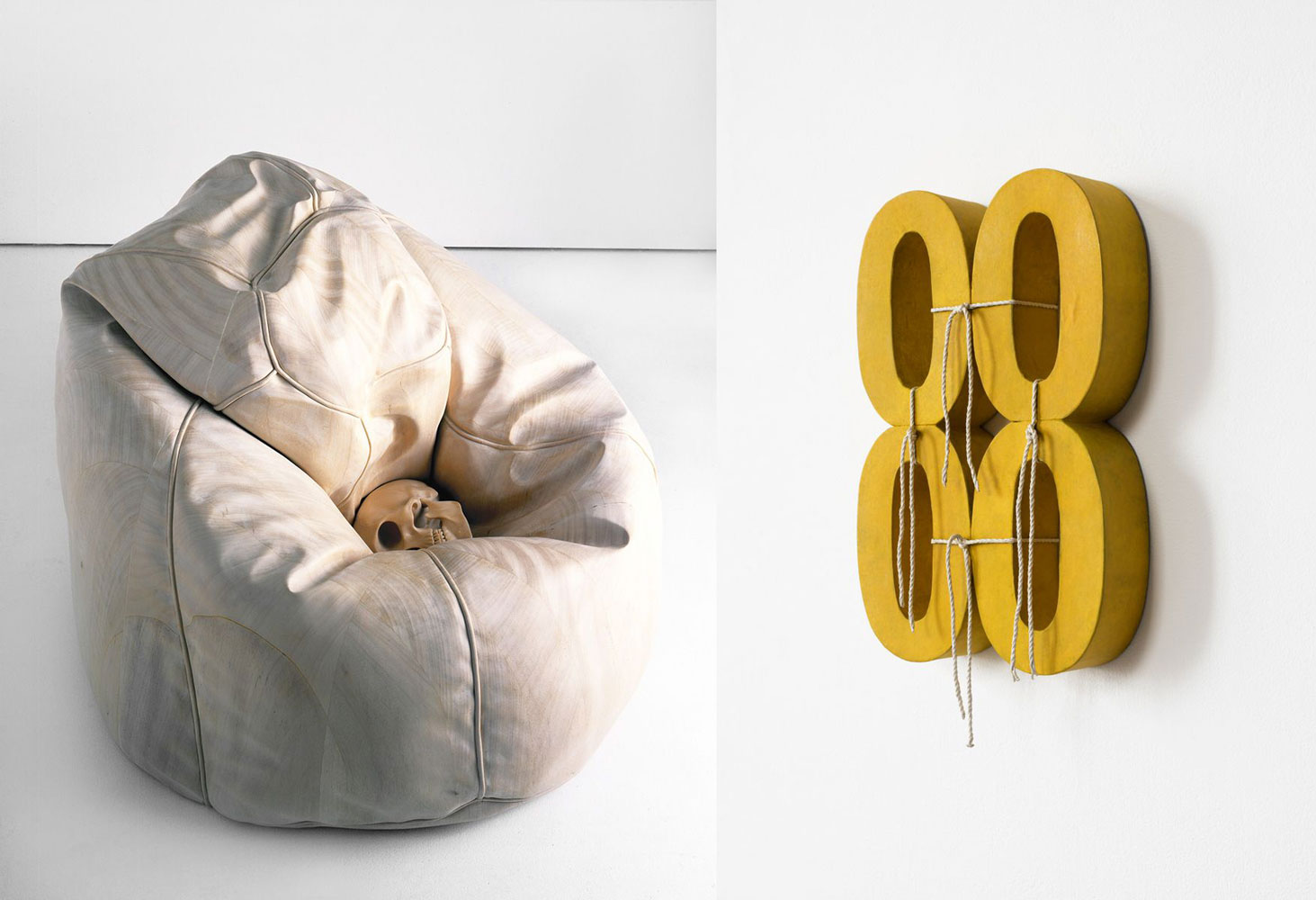ART CITIES:Los Angeles-Ricky Swallow
 Ricky Swallow is best known for sculptural works combining contemporary imagery with the still-life tradition. Swallow has also consistently maintained a watercolour practice throughout his career. His current bronze works extend this practice while reflecting the more recent influences of twentieth-century design, studio ceramics and the inventiveness of folk art. This interest is informed by the time the artist spends in flea markets in his home city of Los Angeles, encountering ‘make-dos’.
Ricky Swallow is best known for sculptural works combining contemporary imagery with the still-life tradition. Swallow has also consistently maintained a watercolour practice throughout his career. His current bronze works extend this practice while reflecting the more recent influences of twentieth-century design, studio ceramics and the inventiveness of folk art. This interest is informed by the time the artist spends in flea markets in his home city of Los Angeles, encountering ‘make-dos’.
By Efi Michalarou
Photo: David Kordansky Gallery Archive

Ricky Swallow in his solo exhibition “Borrowed Sculptures” transforms familiar objects and materials into precise, mysterious bronze sculptures that challenge ordinary perceptions of space, mass, and color. This new group of works includes forms—among them several apparent readymades—that have accompanied the artist, whether literally or figuratively, for extended periods of time, fostering increased intimacy and a pointed, personally resonant surrealism. This becomes particularly clear in a wall-based sculpture produced from a cast of a long, twisting length of rope. The rope has been gathered into the silhouette of a stair stringer, a template used by builders to facilitate the construction of stairways, and therefore to negotiate a transition from flatness to dimensionality. Painted an off-white so that it resembles real rope, the work has a corporeal, organic feel. It also functions as a kind of linear drawing as the eye attempts to follow the course of the rope throughout the total shape. The play between two and three dimensions suffuses the work at every level, from concept to meticulous execution to uncanny experience. But the exhibition also poses questions about the way that furniture objects, like props waiting for a performance, evoke the presence of the bodies that might eventually use them. In this respect, the works in “Borrowed Sculptures”are part of a conceptually oriented discourse that has animated contemporary art throughout the postwar period. Artists like Richard Artschwager, Scott Burton, and Robert Morris are some of those who have addressed related concerns, demonstrating that movement can become most palpable when seen as an expression of still forms. A new floor-based sculpture on view sheds particular light on this lineage. It features the cast of an entire step ladder and a tubular length of cast cane that snakes through and around its rungs. Works of and about steps and stairs have figured in Swallow’s sculptures for years: graphic, composed of repeated shapes, and rich with metaphorical overtones (up and down, above and below), they provide fertile opportunities for formal investigation. Here he uses bronze to draw out the solidity of things considered to be insubstantial, but also, paradoxically, to show how dense objects have their own ways of defying gravity when activated via contrasting textures or materials. Internal movement, meanwhile, becomes a key factor in “Stringer”, a wall-based sculpture produced from a cast of a twisting length of rope. The rope has been gathered into the silhouette of a stair stringer, a template used by builders to facilitate the construction of stairways, and therefore to negotiate a transition from flatness to dimensionality. Organic and fleshy on the one hand, the work also functions as a kind of linear drawing as the eye attempts to follow the course of the rope throughout its total shape. The play between two and three dimensions suffuses it at every level, from concept to final execution.
In the late 1990s, at a relatively young age, Ricky Swallow became known for crafting replicas of everyday objects that had once been important to him: his BMX bike, his family’s telescope, an old cassette player. Made from materials such as cardboard and PVC, these objects, the value of which had diminished over time, gained a new level of permanence and recognition through sculptural form. In the 2000s Swallow, who represented Australia at the 2005 Venice Biennale, turned to wood carving, more directly engaging with traditional sculptural materials and techniques and their associated art-historical formats and references. He was particularly drawn to 17th-century Dutch still-life painting, with its rich layering of symbols and allegories of the transitory nature of life and inevitability of death. Swallow made a number of still-life and vanitas compositions; he was less concerned with the morality of the originals than with their intense fidelity and marking of time’s passing. Many of Swallow’s sculptures from this period involve improbable pairings: a bird with a sneaker, a skull with a beanbag, a crushed Red Bull can with an apple core. These pairings, like Caravan’s balloons and barnacles, create a new sculptural presence that transcends their references. The barnacle – capable en masse of slowing down or even temporarily halting a large ship – provides the support, a kind of anchor, for the more capricious balloon. Time is both acknowledged and transcended – from the transience of the balloon to something enduring and quantifiable (the barnacle marking slow growth and evolution), from our very recent past to imagined future relics. Bronze is a material most familiar to us through its use in public sculptures commemorating important people and events. But, as Swallow demonstrates, it also has the ability to transform the smallest of subjects into monuments.
Info: David Kordansky Gallery, 5130 W. Edgewood Pl., Los Angeles, Duration: 22/7-29/8/20, Days & Hours: by private appointment only, www.davidkordanskygallery.com

Right: Ricky Swallow, Chair Form with Band, 2014, patinated bronze and oil paint, 8 3/4 x 4 x 5 inches (22.2 x 10.2 x 12.7 cm), Unique, © Ricky Swallow, Courtesy the artist and David Kordansky Gallery


Right: Ricky Swallow, Cigarette with Smoke, 2011, bronze, 8 x 3 x 7 inches (20.3 x 7.6 x 17.8 cm), Edition of 3, with 1 AP, © Ricky Swallow, Courtesy the artist and David Kordansky Gallery


Right: Ricky Swallow, Come Together, 2002, laminated jelutong, approximately: 26 x 25 1/4 x 32 inches (66 x 64.1 x 81.3 cm), © Ricky Swallow, Courtesy the artist and David Kordansky Gallery

